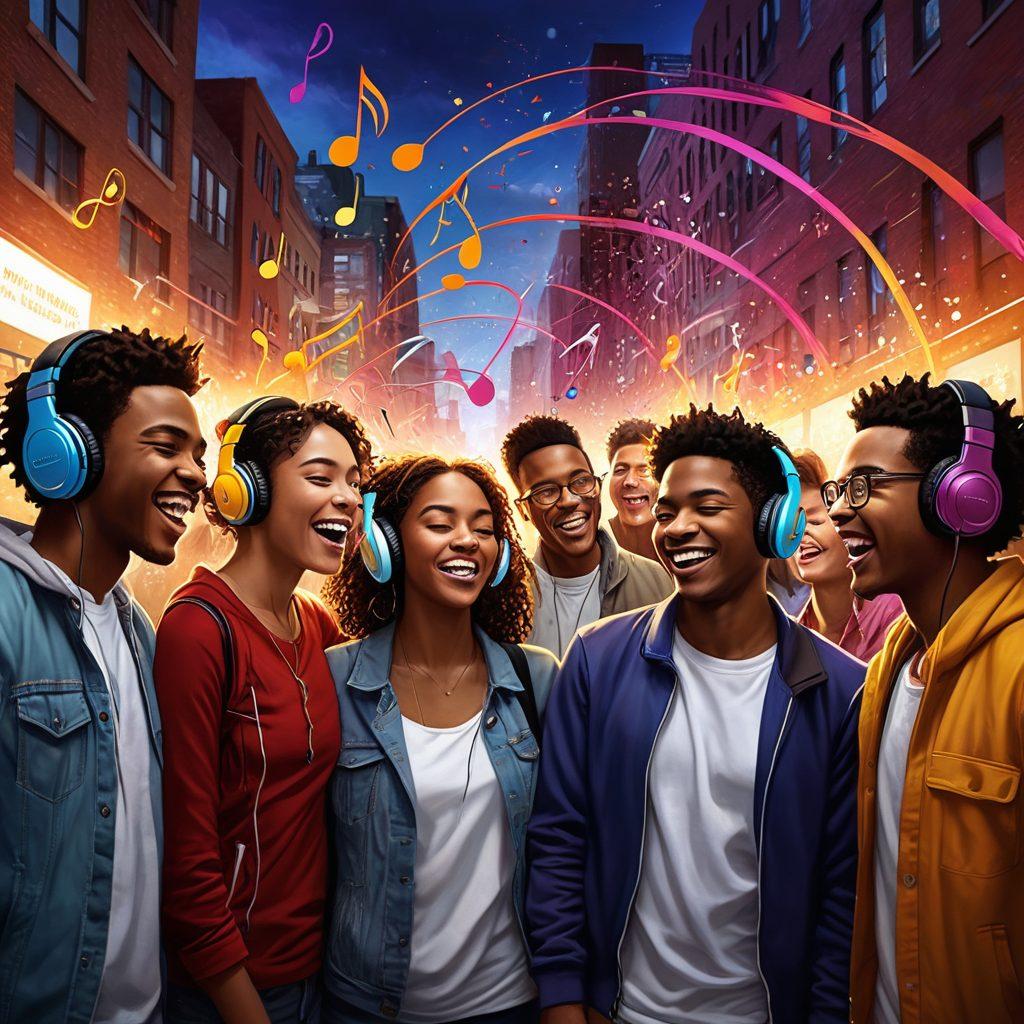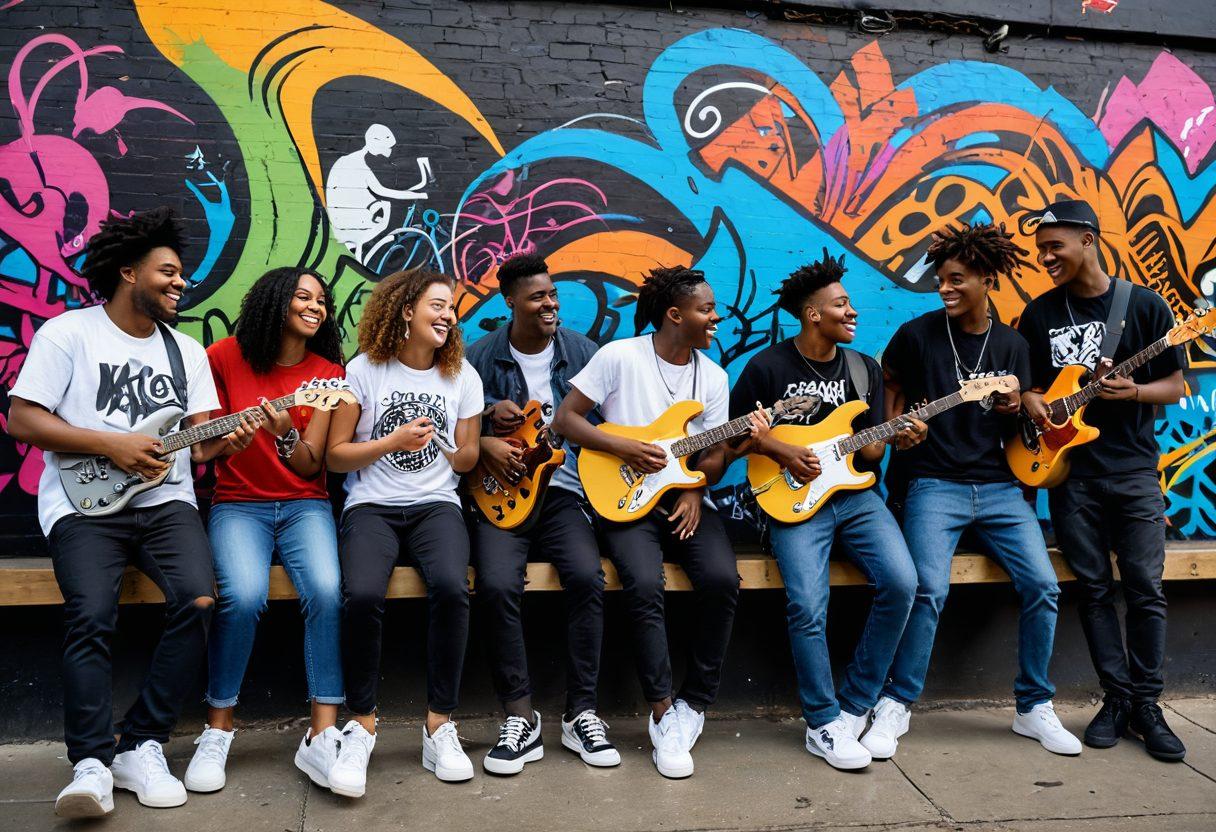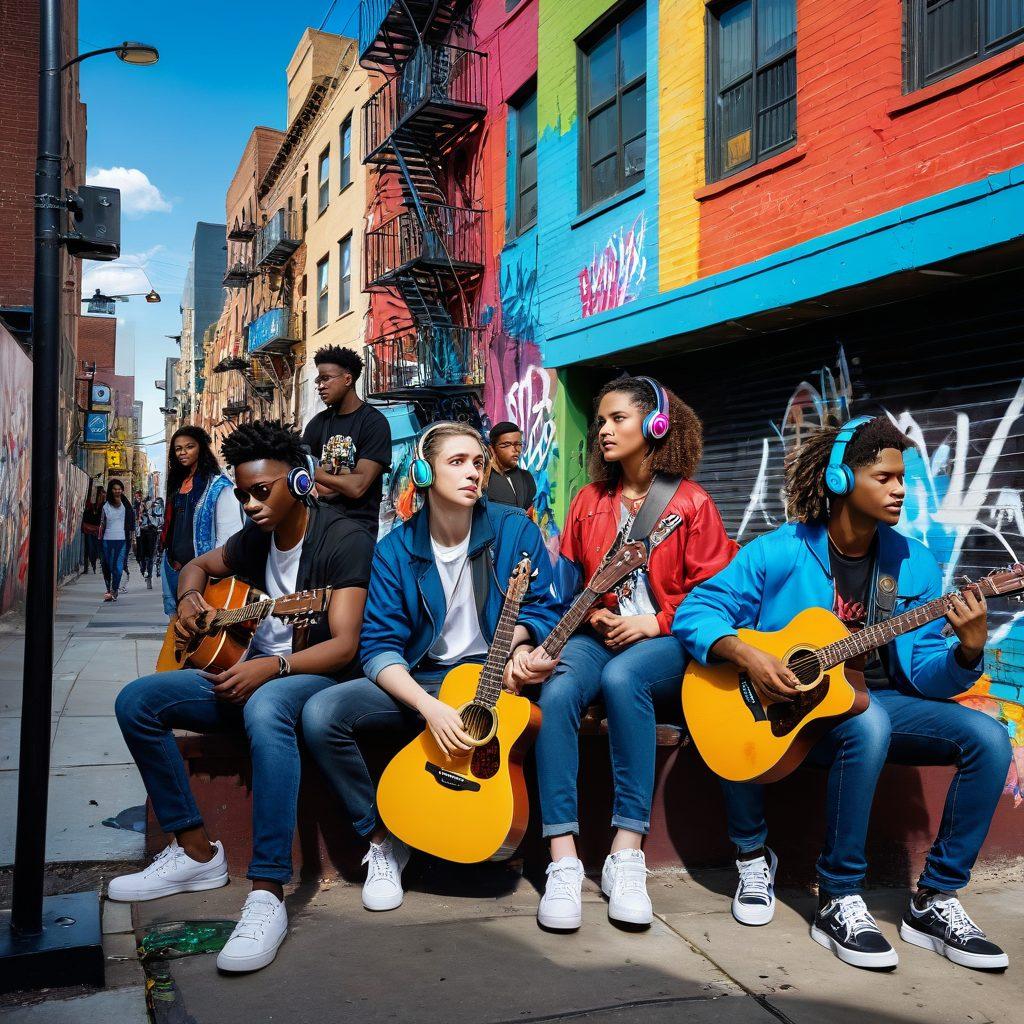Transforming Sadness: How Musical Innovation is Shaping Youth Culture and Community Engagement
Music has an unparalleled ability to connect, inspire, and transform. In today’s fast-paced world, where experiences often revolve around the highs and lows of life, it’s fascinating to see how musical innovation is actively shaping youth culture and enhancing emotional expression. Think about it; have you ever felt a song capture a moment in your life so precisely that it seemed as if the artist was telling your story? Moments like these illustrate the profound relationship between music and our emotional landscape, especially in the face of sadness. Whether you’re diving into the latest pop culture references or seeking solace in underground musical genres, the power of sound can enhance our experiences and create community bonds that defy conventional norms.
Remember the last time a song sent chills down your spine? It’s more than just entertainment; it’s a part of a creative lifestyle rooted in emotional expression. The evolution of the music scene has opened doors to various subcultures that thrive on exploring feelings and experiences—sadness included. Artists and listeners alike are increasingly turning to musical innovation as a means of expressing deeper emotions, which is powerful when addressing youth culture. What if the sadness we sometimes experience can fuel artistic innovation, creating a new wave of impactful sounds?
Take a moment to think about the musical genres that resonate with you. Do they belong to particular cultural trends that not only define your taste but also your lifestyle choices? Whether it’s Hip-Hop, Indie, or Electronic, each genre contributes uniquely to the emotional tapestry of our communities. The entertainment industry is watching keenly, as young people increasingly engage with artists who communicate themes of vulnerability, authentic emotions, and societal issues. This shift highlights an important narrative about how we've come to value connection and authenticity over mere entertainment, changing the landscape of how we view music and its role in our lives.
Today’s youth are adept at utilizing technology to form online communities that gather around shared musical experiences. Platforms like Spotify and YouTube have become modern-day arenas for cultural exchange and community engagement, allowing fans to bond over their favorite sounds. This connection extends beyond individual experiences, fueling discussions on emotional well-being and how art imitates life. Have you ever participated in an online forum discussing heartfelt lyrics? By joining these conversations, you allow your feelings of sadness to be validated, fostering a sense of belonging and shared experience.
Ultimately, the future of music lies in its ability to continue fostering emotional expression and community ties among youth. As musical styles evolve and blend, we see an increase in individuals seeking not just entertainment news, but genuine connections through art. The question that arises remains: will the trend of musical innovation persist as a response to our collective emotional landscapes? One thing is certain: the melodies that pour from our speakers have the power to transcend isolation and bring us together, reminding us that sadness, like music, is a part of the shared human experience. So, let’s embrace the magic of sound—after all, it might just transform not only our youth culture but the fabric of our communities as well.
From Beats to Belonging: The Role of Musical Innovation in Youth Culture
In an age where emotions are frequently connected to curated playlists and catchy hooks, the role of musical innovation in youth culture cannot be overstated. Every beat and lyric carries the potential to resonate deeply, inviting listeners into a world where sadness can be transformed into artistic expression. The fascinating blend of emotional angst and creativity gives rise to a vibrant subculture where youth can find belonging. As each new musical genre emerges, it reflects not only lifestyle trends but also the pain, joy, and experiences of an entire generation. But how exactly does this evolution in the music scene shape community engagement and foster connections among young people?
Imagine being a teenager wrestling with feelings of sadness. You’re invited to a party where the air is charged with pulsating beats—the sounds of ‘lafreak’ blasting through the speakers. In this collective space, something profound happens: the music transforms isolation into camaraderie. Young people dance together, celebrate their shared experiences, and forge bonds that transcend their individual struggles. This is the magic of musical innovation; it serves as a vehicle for emotional expression and a canvas on which social trends paint vibrant stories of belonging.
Musical innovation serves not just as a source of entertainment; it plays a pivotal role in shaping youth culture and defining lifestyle choices. As entertainment news rolls in about the latest hits and rising stars, young people find community in these evolving narratives. From pop culture references enlivening conversations to the shared experience of attending concerts, engaging in online communities centered around musical genres has become a staple of modern life. Intrigued by what’s trending, many individuals latch onto artistic innovation as a way to express their own emotions. What draws you to a certain melody or lyric? Perhaps it echoes your own experiences of sadness or joy, serving as a relatable anthem.
Let’s ponder the question: can music really act as a balm for sadness? Numerous entertainment blogs suggest that it absolutely can. By tapping into the nuances of lyrical storytelling and different musical styles, artists often identify with the sentiments of young fans navigating a complex emotional landscape. Communities form around these emotional connections, focusing on thematic embodiments of resilience, love, or even heartbreak. When young people come together to experience shared moments, they develop a sense of belonging that feels liberating. Have you ever found yourself in a crowd singing at the top of your lungs, every note echoing an unspoken understanding?
In conclusion, musical innovation is more than a mere soundtrack to our lives; it actively shapes the landscapes of youth culture, influencing community engagement in powerful ways. It allows for a creative lifestyle that encourages young people to connect, dream, and express. So the next time you put on your headphones or dance at a local gig, take a moment to consider the deeper implications of the sounds flooding your ears. In the vast world of musical innovation, it’s not just about the rhythm and the beats; it’s about the emotional connections that nurture our sense of belonging and usurp the weight of sadness.
Revolutionizing Sadness: Exploring the Intersection of Music and Lifestyle Trends in Today’s Youth
In today's world, sadness has somehow become synonymous with creativity, especially among the youth. It’s almost as if the weight of heartfelt emotions has found a way to transform into a vibrant explosion of musical innovation. As we explore the intersection of music and lifestyle trends, we uncover a revolution that embraces sadness as a driving force for artistic expression. How many times have we turned to a song during gloomy times, only to feel a little lighter? It’s remarkable how a simple tune can evoke a wave of emotions and lead to artistic innovation, shaping not just individual lives but also larger community engagement.
The current music scene is brimming with pop culture references that reflect a youthful spirit captivated by its own emotional landscape. Take, for instance, the rise of genres that blend lo-fi beats with introspective lyrics. Artists across platforms like lafreak capture the essence of sadness, allowing listeners to explore their feelings in a safe space. This phenomenon is reshaping traditional entertainment industry norms, inviting artistic innovation that embraces this complex emotion. What if sadness isn't just a pitfall but a powerful canvas for a creative lifestyle?
Youth culture today thrives on social trends that embrace vulnerability, turning sadness into a relatable topic. Think of the countless entertainment blogs celebrating mental health awareness through music. With every heartfelt ballad and every raw lyric, young audiences are not only entertained but also invited to engage in discussions regarding emotional expression. The collective experience fosters an online community where individuals feel a sense of belonging. But it begs the question: is sharing our sadness through music a way to reclaim our narratives?
Cultural trends are shifting, revealing a unique subculture that prioritizes emotional authenticity over unrealistic portrayals of happiness. Today’s audiences gravitate towards artists who are unafraid to confront their feelings, blending musical genres in ways that resonate with their own experiences. The traditional barriers between artist and listener are coming down, and in their place, we find opportunities for community engagement. Can music truly bridge the gap between sadness and a sense of connection?
As we gaze into the future, it is clear that the artistic landscape is evolving alongside youth lifestyle choices. With emerging trends centered around emotional wellness, we find promising pathways for both personal and communal growth. The entertainment industry is awakening to this reality, empowering artists to explore deeper emotional themes without fear of backlash. Let's embrace this artistic innovation and continue to shape a world where sadness is not a stumbling block but a stepping stone towards creativity, collaboration, and community. After all, in the realm of music, every sad note dances with possibility.


